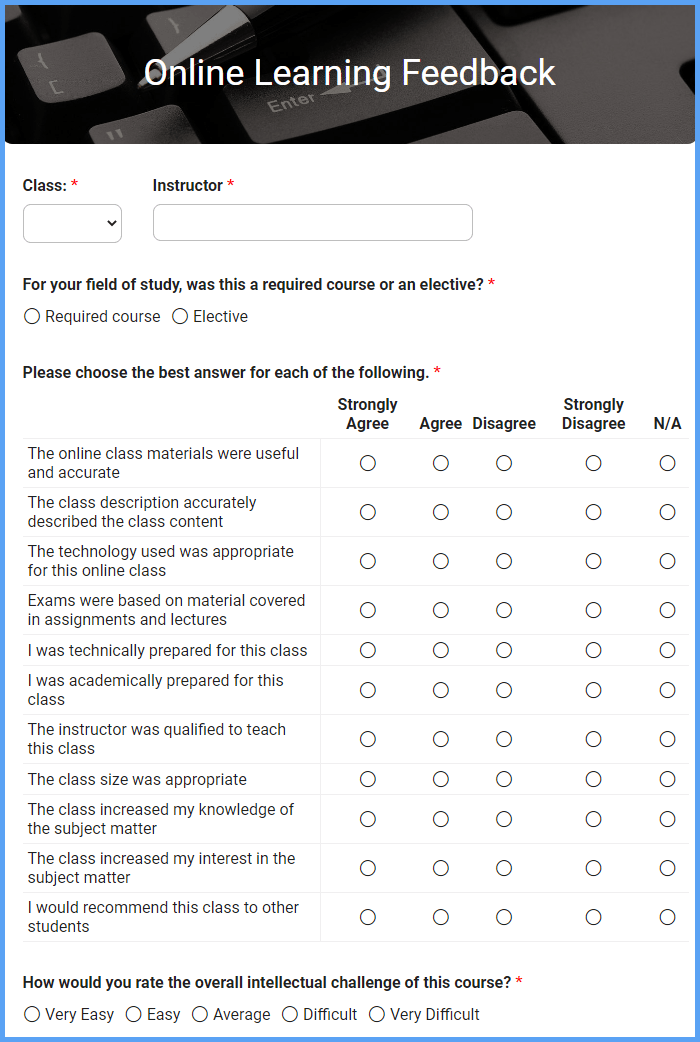The Importance of Online Education Feedback for Success
In today’s rapidly evolving world of online education, feedback plays a pivotal role in ensuring continuous improvement for both learners and educators. Whether you’re a student seeking to enhance your learning experience or an instructor looking to improve your teaching methods, online education feedback is essential for growth and success.
This article dives deep into why feedback matters, the best practices for providing effective feedback, and how feedback can be utilized to create a more dynamic and enriching online learning environment.

Why Online Education Feedback Matters
Feedback serves as a crucial tool for shaping and improving the learning process. By offering insights into what’s working and what isn’t, it allows both educators and students to adjust their approaches for better results. Here are several reasons why feedback is invaluable in the online education ecosystem:
1. Improvement for Both Learners and Instructors
Feedback allows students to understand their strengths and areas for improvement. For instructors, it provides insights into how their teaching methods are being received and where they might need to modify their approach. Constructive feedback is key to ensuring that both parties can optimize their learning and teaching experiences.
2. Encouragement of Student Engagement
In online courses, where interaction is often limited compared to in-person learning, feedback can be a tool to keep students engaged. Timely and relevant feedback can motivate students to continue their learning journey, helping them stay focused on their educational goals.
3. Identifying Learning Gaps
Effective feedback helps pinpoint areas where students may be struggling. By addressing these issues promptly, educators can provide the necessary support, whether it’s through additional resources or one-on-one tutoring. This ensures that students are not left behind and can continue progressing at a healthy pace.
How to Give Effective Online Education Feedback
To make the most of feedback, it must be clear, actionable, and delivered in a timely manner. Here are some best practices for providing feedback in the context of online education:
1. Be Specific
Vague feedback doesn’t provide much value to learners. Instead of just saying “Good job” or “Needs improvement,” offer specific observations. For example, instead of simply saying, “Your writing needs improvement,” you could say, “Your argument lacks supporting evidence in the third paragraph. Try to include more examples or data to strengthen your point.”
2. Use Positive Reinforcement
Positive feedback is just as important as constructive criticism. Highlighting students’ achievements boosts morale and encourages them to keep improving. For instance, you can say, “You did a great job explaining the key concepts in this assignment. Keep up the good work!”
3. Be Timely
Providing feedback promptly is essential in the online learning environment. Delayed feedback diminishes its effectiveness as students may have already moved on to the next task. Ideally, feedback should be provided within a few days after an assignment submission, allowing students to apply the feedback while the material is still fresh.
4. Offer Clear Actionable Steps
Feedback should include clear next steps or suggestions for improvement. Simply pointing out a problem without offering a solution can leave students feeling lost. For example, “Consider revising the introduction to provide a clearer thesis statement” is a specific suggestion that can help the learner improve in the future.
Learn more about actionable feedback strategies here
Types of Feedback in Online Education
Not all feedback is the same. In the context of online education, feedback can come in various forms, each serving a unique purpose. Understanding these different types can help you choose the most effective method for your situation.
1. Formative Feedback
Formative feedback is provided during the learning process and is aimed at guiding students toward improvement. It helps identify mistakes early, allowing students to correct them before their final submission.
Formative feedback is often given in response to drafts, quizzes, or practice activities and provides the opportunity for learners to refine their understanding before the final assessment.
2. Summative Feedback
Summative feedback, on the other hand, is provided after the completion of a task or course. This type of feedback is more evaluative and is typically used to assess a learner’s overall performance. For instance, when grading a final exam, summative feedback provides a summary of the learner’s strengths and weaknesses throughout the course.
3. Peer Feedback
Peer feedback involves learners providing feedback to each other. This method encourages active engagement and allows students to gain different perspectives on their work. Peer feedback can also promote critical thinking and reflection, making it a valuable tool for collaborative learning.
4. Automated Feedback
Automated feedback is commonly used in online assessments, quizzes, or courses that use learning management systems (LMS). This feedback is generated by the system based on the student’s responses. While automated feedback can’t replace human feedback, it can be effective for offering quick corrections on simple tasks, such as multiple-choice questions or short-answer quizzes.
Tools for Collecting Feedback in Online Education
Collecting feedback from students is just as important as giving it. Several tools can help instructors gather valuable insights from their learners. Below are some top tools for collecting online education feedback:
1. Google Forms
Google Forms is a simple and effective tool for creating custom feedback surveys. You can design feedback forms that ask students to evaluate the course, the instructor, or specific assignments. The results are automatically compiled into a Google Sheet, making it easy to analyze and act upon.
2. SurveyMonkey
SurveyMonkey offers advanced survey features, such as the ability to create anonymous surveys, track responses over time, and analyze feedback in various formats. It’s a great tool for collecting comprehensive feedback about an entire course or specific lessons.
3. Formsite
Formsite provides a variety of feedback forms that can be customized to suit your needs. From course evaluations to post-assessment surveys, Formsite offers flexible feedback options that can help instructors gather important insights.

4. Typeform
Typeform is a user-friendly tool that allows for creating visually appealing and engaging surveys. The interactive design of Typeform makes the feedback process enjoyable for students, leading to higher response rates and more accurate feedback.
How Feedback Enhances Learning in Online Education
Feedback is a key driver of improvement for both students and instructors. Here’s how it helps:
1. Supports Continuous Learning
When feedback is provided in real-time, it supports continuous learning. It allows students to make immediate corrections and keeps the learning process dynamic. Students who receive frequent feedback are more likely to stay engaged and motivated.
2. Helps Students Build Confidence
When students receive positive and constructive feedback, they feel more confident in their abilities. Confidence is a crucial element in online learning, as it encourages students to take on new challenges and continue advancing through their course materials.
3. Improves Teaching Methods
For instructors, feedback helps identify areas of improvement in their teaching methods. By analyzing feedback, instructors can refine their approaches, adopt new technologies, and create a more engaging learning environment. Feedback allows them to meet the diverse needs of students and enhance their overall teaching effectiveness.
FAQs About Online Education Feedback
1. What is the best way to collect feedback from students?
The best way to collect feedback depends on the type of course and the students. Using Google Forms, SurveyMonkey, or Typeform are excellent options for creating surveys and questionnaires. Additionally, discussion boards or informal feedback during class can also be helpful.
2. How do I provide constructive feedback to students?
To provide constructive feedback, focus on being specific, timely, and actionable. Point out what students did well and offer suggestions for areas of improvement. Providing clear next steps helps students understand how to improve and succeed in future tasks.
3. Why is feedback important in online education?
Feedback is crucial in online education because it helps improve learning outcomes by addressing gaps in knowledge and reinforcing good practices. It also keeps students engaged and motivated, which is especially important in the online environment where face-to-face interaction is limited.
Conclusion
Online education feedback is a cornerstone of effective learning and teaching. Whether you’re a student or an instructor, regular and meaningful feedback can help you achieve your goals. By using the right tools and strategies to collect and provide feedback, you can foster a dynamic learning environment that drives success.
Remember to always seek out feedback and be open to making adjustments—it’s a key part of growing and improving in any educational journey.




